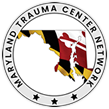Disaster Preparedness
Disaster preparedness is a misleading concept. No organization is ever truly prepared for a disaster event. Most preparedness activities are directed toward what is known as an “All Hazards” concept. It is extremely difficult to plan for every possible type of event that could impact a community.
An All Hazards Emergency Plan provides a basic framework to begin emergency operations, regardless of the type of event. In this approach, modifications to the basic plan are implemented to address the specific hazards that are causing the emergency. These plans are shared with all agencies that have responsibility during an emergency. These agencies can then coordinate the response and restore normalcy as quickly as possible.
There are four parts to an effective emergency preparedness plan: mitigation, preparation, response and recovery. The basis of these activities is developed through an analysis of possible or likely hazards developed through an organizational Hazard Vulnerability Analysis.
The most important preparation for everyone is to prepare for yourself and your family to be able OK without outside help for a minimum of 72 hours. Each of us should make a “go kit” – this should include a sufficient supply of water, nonperishable foods, medications, personal hygiene items, battery powered radios and communications devices, clothing, shoes, bedding and other necessary items for everyone in your family. Have supplies for pets as well. Preparation must begin in advance in case of a catastrophic situation. Being prepared is the most important thing each of us can do to survive in difficult times.
Develop a communications plan so that you and your family know how to stay in touch in the event of an emergency. Be sure and establish a contact outside the immediate impact area in case local communications are down. Think about where you will go to seek shelter if you cannot return to your home. Develop a meeting location where your family will reunite after the emergency has ended.
Plan ahead and be prepared!


